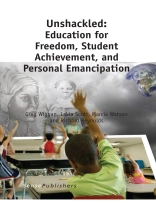Harnessing conceptual inspiration through the work of Harriet Tubman and Queen Nanny the Maroon of Jamaica, this book explores the historical and contemporary role that education has – and can continually play as an instrument of personal and group liberation. The book discusses the early formations of the Transatlantic Slave Trade, the enslavement of native populations, and the subsequent development of the Underground Railroad and Maroon societies in the Caribbean and Americas as systems of liberation. It investigates the development and maintenance of racial, gendered and class stratifi cation, and provides a personal path to freedom as a context for a broader discussion on using education as a mechanism for dismantling the effects of colonization, miseducation, and social-psychological domination in schools and society. As a contemporary issue, it presents an in depth analysis of the Tucson Unifi ed School District in Arizona, and the controversy surrounding its ethnic studies program as an example of one of the contested sites of curriculum development and student liberation. Additionally, it discusses high performing charter schools as an alternative model of education, which may help to provide a systematic way of unshackling institutional barriers and oppression. Ultimately, this book acknowledges that today the road tofreedom is still one we must all travel as: miseducation, school failure, school dropout, unemployment/underemployment, poverty, neighborhood violence, incarceration, and a growing prison industrial complex are all reminders of the work that still must be accomplished. Like those who historically sacrifi ced their lives to gain freedom and an education, today, with the lingering effects of institutionalized systems of domination, education must continue to be an instrument of social mobility and liberation, if indeed, we are to make schools and society more humane and inclusive towards those who are still waiting to be unshackled. Thebook presents implications regarding the treaties on education for freedom as a school reform and public policy topic.
Table des matières
Acknowledgements; Introduction; Chapter 1: The World Under Siege and the Railroad to Freedom: Unshackled; Chapter 2: Global and Local Resistance; Memories of the Motherland-Africa, Unshackled; Chapter 3: Journey to Freedom: From Miseducation and Colonization to Liberation; Chapter 4: To be Unshackled: The Rise and Fall of Tucson, Arizona’s Ethnic Studies Program; Chapter 5: Nontraditional Models of Success: The Charter School Option; Chapter 6: Unshackled: School Reform and the Way Forward; References; About the Author; Index.












